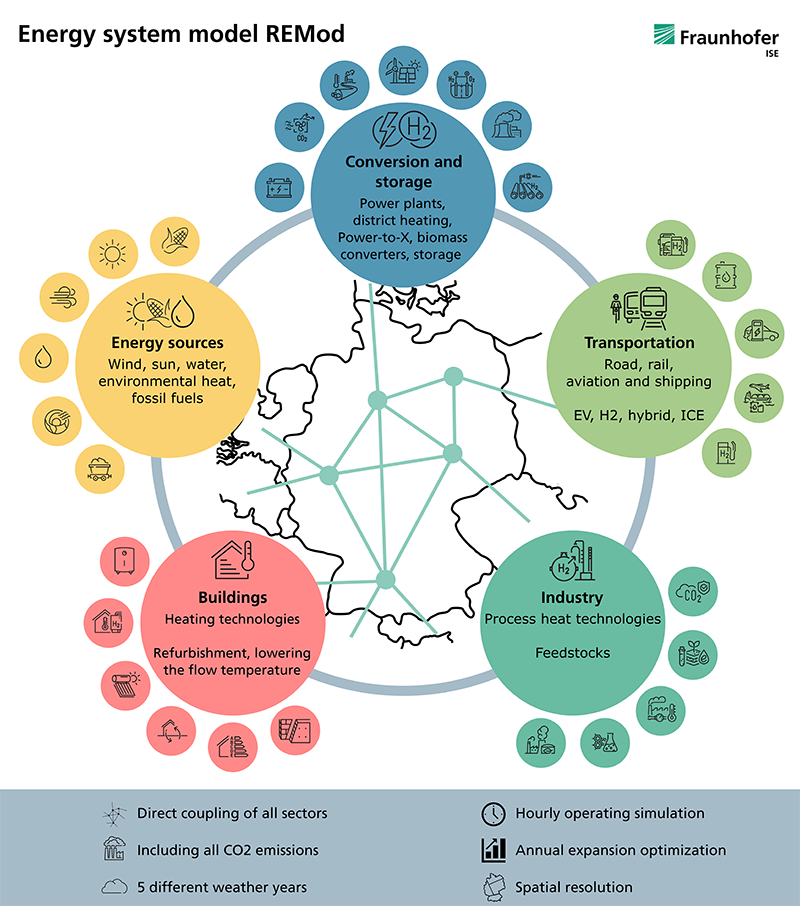Analytical Focus
- Cost-optimized structural transformation of (trans-)national energy systems towards greenhouse gas neutrality
- Future year specific expansion paths of technologies as well as market share and technology trends
- Localization of technologies in several regions (e.g. EU states or federal states) and expansion of the electricity and hydrogen grid
- Technology-specific operational management strategies based on the interaction of sector-coupling technologies
- Impact and system integration of sector-coupling technologies such as electric vehicles, electrolyzers, or electric heat pumps
Background of Model Application
To achieve the set climate protection goals, the European Commission and the German government have decided to fundamentally restructure the European and German energy system. The energy system model analyzes this transformation and its effects:
How can a cost-optimal transformation of a national or transnational energy system be achieved, considering all energy sources and consumer sectors, while meeting the declared climate targets and ensuring of a secure energy supply? The REMod model is ideally suited to answering specific questions on the transformation of (trans-)national energy systems due to its adaptable scenario analysis capabilities. Through repeated collaboration with federal and state ministries, international research institutions and especially through close exchange with industrial clients, the model has been continuously developed and has been proven to be an effective strategic consulting tool.
Characteristics of the Model
The REMod model is based on a simulation-based cost optimization of (trans-)national energy supply systems whose CO2-emissions do not exceed a given budget and/or given annual reduction targets. The optimization objective is to scale all generators, storages, converters, and loads at minimum cost in such a way that the energy balance of the entire system is met at every hour. Each technology characteristic can be mapped in any level of detail. For example, different charging strategies for battery electric vehicles or the interaction of thermal storage with different heating systems can be realistically represented. In addition to ecological sustainability and economic efficiency, the model also considers security of supply through a high level of technical detail and temporal resolution. By incorporating real weather data, the influence of extreme weather years on the energy system is also taken into account. Similarly, a multi-node approach allows different regions (e.g., EU states or federal states) in the observation area to be mapped and their interactions to be studied, so that conclusions can be drawn about infrastructure measures. REMod offers the option of mapping individual countries or even entire continents. Currently, REMod is mainly used to map the German and European energy system.
